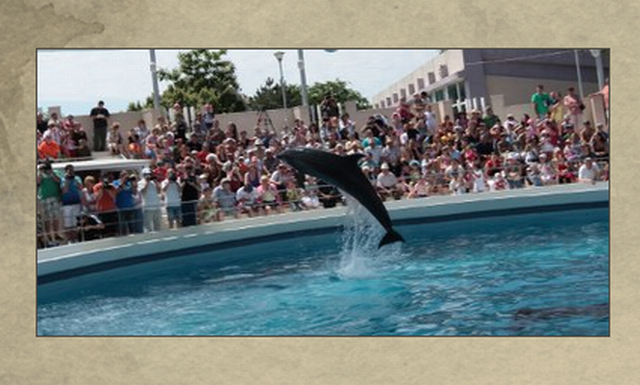The Dolphinarium in Constanta
This month the facility celebrates 42 years of existence.

Christine Leșcu, 07.06.2014, 14:00
Laid out on the premises of the Natural Sciences Museum Compound in Constanta, on the Romanian Black Sea Coast, the dolphinarium celebrated 42 years of existence, on June the 1st. It is the largest and most important institution of its kind in South-Eastern Europe and it is no longer a surprise why it was opened on International Children’s Day. Along the years, the little ones have had the opportunity to enjoy the dolphins’ games, alongside adults who rediscovered, for a brief while, the beautiful universe of childhood. Angela Curlisca from the Constanta Dolphinarium has further details:
“The idea of setting up this facility belonged to engineer Marcel Stanciu, the former director of the Constanta-based Sea Research Institute. He thought a dolphinarium would give him the possibility to show those beautiful sea mammals, the dolphins, to the public at large. Somehow, he tried to combine the activities specific to a research institution with those of a museum. This has turned out to be an asset for the residents of Constanta, who had the opportunity to visit other exhibitions staged in the museum, apart from watching the dolphins’ show and from admiring these beautiful and intelligent animals. For instance, there were dioramas, very much appreciated by our visitors, who were also invited to look at more classical exhibits such as the skeleton of a whale which was put on show at the Sea Museum. We have recently mounted an exhibition of stupendous mine flowers. The large pool was opened to the public on June the 1st 1972. Back then, it was an open-air pool, but special works are currently being carried out to roof it. It was here that the first dolphin was introduced to the public. It belonged to the smallest species living in the Black Sea. Its name was Harley and had been trained in another pool before it was brought over, to the dolphinarium.”
Apart from Harley, other species were brought over to the Dolphinarium in Constanta, such as the common dolphins which were much more playful. Also, those who visited the dolphinarium in its first years of existence, undoubtedly remember a group of 5 to 7 small-sized dolphins. Beautifully coloured, they were wagging their tails and holding their heads high, in a bid to say hello to the public, then they were taking incredibly high jumps and were spinning in the air. The first big sized dolphins, like those who are now living in the dolphinarium arrived in Constanta some 25 years ago. The best-known and most beloved dolphin was Mark, who died a few years ago. He was 30 years old, 23 of which he spent in captivity. He, just like other dolphins before him, had been captured in the Black Sea, his natural habitat. Things are now different. Angela Curlisca tells us why:
“We now have two females, which are part of a group that came here from Beijing, China, four years ago. Their names are Nini and Chen-Chen, are 9 years old and were born in captivity. The public is extremely delighted and loves them a lot because they are very playful. Their parents were also born in captivity, but their grandparents were born in the ocean. So, they are the second generation born in captivity. When we started looking for some new friends for Mark, dolphins from the Black Sea, born in captivity, were nowhere to be found. More exactly, the waiting list was too long. Furthermore, under the international laws, it is compulsory to adopt dolphins born in captivity and not in their natural habitat.”
The dolphins in Constanta are extremely playful, to the delight of visitors, irrespective of age, but they have not been tamed, nor trained to do tricks and don’t appear in shows. Being brought over to the dolphinarium to serve educational purposes alone and hopefully to reproduce themselves, the dolphins are presented to the public during some demonstrative sessions, when the public can see what dolphins do naturally, such as taking jumps. Dolphins are only trained to bring to the public what they find floating in the pool: a ring or a ball. Boasting a 40 year long history, the Dolphinarium in Constanta continues to be visited by tourists, who have either made a family tradition from going to the dolphinarium every summer, or visit it for the first time.






























